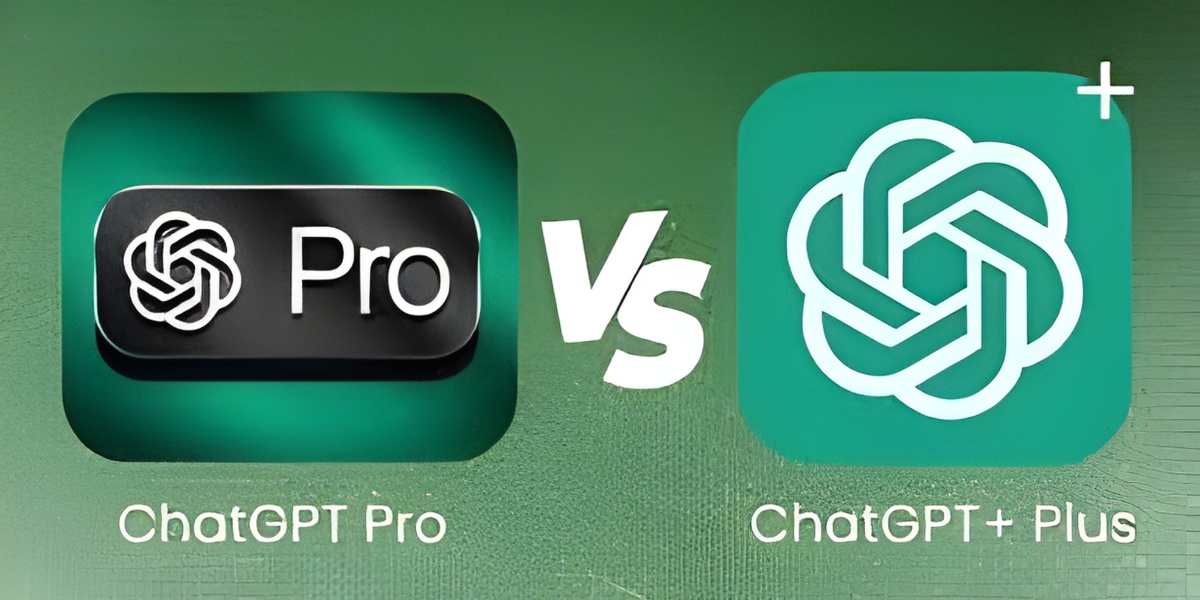Creating a well-structured SEO content brief is important for producing content that ranks well, engages readers, and meets business goals. A strong brief acts as a roadmap for your team of writers, ensuring alignment with your content strategy and SEO requirements.
This guide will walk you through the essential components, best practices, and tools for creating an effective SEO brief template.
What is an SEO Content Brief?

An SEO content brief is a strategic document that provides clear guidelines for creating optimized content. It includes essential details such as target keywords, audience insights, and content objectives to ensure the final piece aligns with both search engine algorithms and user needs.
Why is an SEO Brief Important?
- Improves Content Quality: A detailed brief ensures that writers produce high-quality, targeted content.
- Enhances Search Rankings: By aligning with search intent and including relevant keywords, briefs help improve organic traffic.
- Streamlines Workflow: Clear instructions reduce revisions and save time during the content creation process.
- Aligns Teams: Ensures consistency across your team and projects.
Key Elements of an SEO Content Brief

An SEO content brief is a helpful guide for writers. It gives them the details they need to create quality content that fits your content strategy.
The parts of an SEO content brief may change based on what you need.
However, most of them usually include these key elements:
- Target Audience: Understanding your target audience is important. Define their demographics, interests, and pain points to ensure the content resonates with them. This helps tailor the piece to meet their needs and improve engagement.
- Brand Voice and Writing Style: Specify the tone and style that align with your brand. For example, whether the content should be conversational, formal, or authoritative. Consistency in brand voice strengthens your identity across all types of content.
- Primary and Secondary Keywords: Include the main keyword (primary) and related keywords (secondary) to guide the content’s focus. These keywords help optimize the piece for search engines while covering a broader range of search terms.
- Search Intent: Clarify the purpose behind the search queries you’re targeting—whether informational, transactional, or navigational. Aligning with search intent ensures that the content meets user expectations.
- Content Goals and Objectives: Define what you want to achieve with the content—such as driving organic traffic, generating leads, or educating readers. Clear goals provide direction for writers and align with your content strategy.
- Editorial Direction: Provide a detailed outline of headings and subheadings to structure the piece effectively. This ensures that key points are covered and makes the writing process smoother.
- Word Count and Style Guidelines: Specify the desired content length based on competitive analysis or SEO requirements. Include any style guide preferences for formatting, tone, or grammar to maintain consistency.
- Internal and External Links: Suggest internal links to relevant pages on your website to improve navigation and SEO. Also, include high-authority external links to enhance credibility and provide additional value to readers.
- Competitor Links: Analyze competitor articles to identify gaps or opportunities for differentiation. Provide examples of what competitors are doing well or areas where your content can outperform theirs.
- Meta Title and Description: Provide guidance for creating an optimized meta title (50–60 characters) and meta description (120–160 characters). These elements should include target keywords and entice users to click on your page in search results.
- Headings: Outline specific headings (H1, H2, H3) that organize the content logically. This improves readability for users and helps search engines understand the structure of your piece.
- Technical Details: Include instructions for technical SEO elements like URL slugs, alt text for images, or schema markup if applicable. These details enhance on-page optimization.
- Call to Action: Define what action you want readers to take after consuming the content—such as signing up for a newsletter, downloading a resource, or making a purchase. A clear CTA aligns with marketing goals.
These key elements ensure that your SEO content brief provides all the necessary information for creating quality content that ranks well in search engines while meeting user needs effectively.
How to Create an Effective SEO Brief Template?

Creating a good SEO brief is not hard. Just follow a clear plan and include useful data. This way, you can help your writers make great content that works well for SEO. Here are key steps to help you:
Researching Keywords and Competitor Content
Start by conducting thorough keyword research using tools like SEMrush or Ahrefs to identify the primary keyword and related secondary keywords with high search volume. These keywords should align with your marketing goals and target audience’s search terms.
Next, analyze competitor articles ranking for similar topics. Look for gaps in their content or areas where you can provide more value, such as addressing pain points or adding unique insights.
This competitive analysis ensures your piece of content stands out and meets SEO requirements.
Structuring the Content Outline
A well-organized content outline is essential for effective content creation. Begin by defining the main topic and breaking it down into clear headings (H2s) and subheadings (H3s). Include key points under each section to guide the writing process.
For example, if creating a blog post, ensure the structure addresses search intent by covering all relevant aspects of the topic. Specify additional details like word count, style guide preferences, and tone of voice to maintain consistency with your brand voice.
This structured approach helps writers focus on producing quality content while optimizing for search results.
Providing Clear Instructions For Writers
To streamline the content creation process, include detailed instructions in your brief template.
Highlight essential elements such as meta title, meta description, internal links, external links, and anchor text suggestions. Specify the target audience’s demographics and pain points to ensure the content resonates with readers.
Additionally, provide examples of competitor links or top-performing articles for inspiration while emphasizing originality.
Clear guidelines on editorial direction, word count, call-to-action (CTA), and technical details like URL slugs or image alt text will help writers deliver optimized and cohesive content.
By following these steps, you can create an SEO brief template that simplifies the writing process while ensuring alignment with your content strategy and SEO goals. A good content brief not only enhances productivity but also improves content ranking by addressing search intent and including best practices in content optimization.
How Do You Write A Great Content Brief?

Writing a great content brief requires careful planning and attention to detail.
By providing clear, actionable instructions, you can help your team of writers create high-quality content that aligns with your SEO strategy, engages your target audience, and ranks well in search results.
Here’s how to do it step-by-step:
Analyze SERP Results
Start by conducting a SERP (Search Engine Results Page) analysis for your target keyword. This involves examining the top-ranking pages to understand what type of content performs well.
Look at factors like search intent (informational, transactional, or commercial), content format (blog posts, videos, or guides), and common elements like headings or meta descriptions.
By identifying gaps in competitor articles or areas for improvement, you can guide your writers to create content that stands out and fulfills SEO requirements.
Identify The Best Resources
Provide writers with reliable resources to base their content on. This could include competitor links, case studies, or authoritative articles related to the specific topic. Highlight key points or insights from these sources that should be included in the piece of content.
This ensures the final output is both accurate and valuable for readers while addressing their pain points effectively.
Pen Your Objective
Clearly define the purpose of the content in one or two sentences.
For instance, is the goal to educate readers, drive organic traffic, or encourage a purchase decision? A well-defined objective helps writers stay focused and ensures the piece aligns with your marketing goals and content strategy.
Use The Objective To Lay Out The Structure
Based on the objective, create a detailed content outline with headings (H2s) and subheadings (H3s).
For example, if targeting an informational query, structure the article as a step-by-step guide or listicle. Include notes under each heading about what key points to cover and any internal links to add.
A clear structure ensures writers deliver quality content that meets SEO requirements and addresses search intent.
Edit
Before sharing the brief with your team of writers, review it thoroughly for clarity and completeness. Ensure all essential information—such as primary keywords, word count, target audience details, and meta-description guidelines—is included.
A polished brief minimizes confusion during the writing process and improves the chances of producing quality content that ranks well in search results.
By following these steps, you can create an effective content brief that simplifies the writing process while ensuring alignment with your SEO goals and audience needs. A good brief not only saves time but also enhances content optimization and boosts search traffic.
What To Avoid When Creating An SEO Content Brief?

Making a good SEO content brief is important for your content to do well. There are some common mistakes to avoid. These mistakes could make your content less effective.
Here are the common pitfalls to avoid:
(Unconsciously) Requiring Keyword Stuffing
Keyword stuffing happens when you overload your content with the same primary keyword repeatedly, making it sound unnatural. While keywords are essential for SEO, overusing them can hurt your rankings as search engines penalize this practice.
Instead, focus on natural keyword integration and include secondary keywords or synonyms to improve readability and content quality. A good content brief should emphasize creating quality content that flows naturally while meeting SEO requirements.
Blindly Following Keyword And Briefing Tools
SEO tools like SurferSEO or Frase are helpful for keyword research and content optimization, but relying on them entirely can lead to generic or overly mechanical briefs. These tools might suggest irrelevant keywords or ignore the nuances of your target audience and brand voice.
Always customize the brief by prioritizing search intent and aligning it with your marketing goals. Use tools as a guide, but ensure the final brief reflects your unique content strategy.
Only Creating Briefs For Blog Posts
Limiting SEO briefs to blog posts overlooks other valuable types of content like landing pages, case studies, or social media posts.
Each type of content serves different purposes in your content marketing strategy and requires tailored instructions. Expand your brief creation process to cover all types of content so that every piece aligns with your SEO goals and engages your target audience effectively.
Not Using A Template
Skipping a standardized template can lead to inconsistent briefs that confuse writers and slow down the content creation process.
A good content brief template ensures all key elements—such as primary keywords, internal links, meta descriptions, and target audience details—are included every time. Templates save time, improve collaboration, and maintain consistency across all pieces of content.
By avoiding these common mistakes, you can create effective SEO briefs that guide writers to produce optimized, engaging, and high-ranking content. A well-thought-out brief not only improves the writing process but also ensures alignment with your overall content strategy and marketing goals.
Tools To Speed Up SEO Content Brief Creation

Creating SEO-friendly content briefs can be time-consuming, but with the right tools, you can streamline the process and save valuable time. Here’s a breakdown of some of the best tools available for brief creation:
Topic
Topic is an SEO content tool designed to automate the research and outline-building process for SEO briefs.
It analyzes the top-ranking pages for your target keyword and generates a research document that includes headings, subtopics, and questions to address. Its Outline Builder allows you to curate this information into a detailed structure quickly.
Topic also provides a Content Grader to ensure your content is comprehensive before publishing. With its keyword research capabilities, it helps identify search volume and intent for both primary and secondary keywords, making it easy to create a well-rounded brief.
Marketmuse / Surfer / Scalenut
These three tools offer unique features for creating SEO content briefs:
- MarketMuse: Focuses on content strategy by analyzing your topic against top-ranking competitor articles. It provides detailed recommendations for keywords, internal links, content depth, and structure to improve rankings. It’s ideal for advanced users looking for in-depth optimization insights.
- Surfer SEO: Specializes in creating content clusters and optimizing pieces based on NLP (Natural Language Processing) suggestions. Surfer provides a Content Score based on competitor analysis, helping you refine your brief with data-driven insights.
- Scalenut: Known for its user-friendly interface, Scalenut offers tools like Cruise Mode, which automates the process of creating factual, plagiarism-free content outlines. It also provides keyword clustering and competitor analysis to help you craft briefs that address search intent effectively.
Each tool caters to different needs, but all contribute to faster and more efficient brief creation.
Frase
Frase is an AI-powered content optimization tool that excels at creating detailed SEO content briefs.
By analyzing SERP results for your target keyword, Frase identifies ideal word counts, headings, questions (like “People Also Ask”), and competitor strategies. It allows you to include writing guidelines, topic clusters, FAQs, and even statistics directly in your brief.
With its intuitive interface, Frase simplifies collaboration by enabling you to share briefs with your team or writers seamlessly.
Its ability to integrate SERP insights into the brief ensures that your content aligns perfectly with search intent. Using these tools can significantly reduce the time spent on manual research while ensuring that your SEO briefs are comprehensive and effective.
Whether you’re focusing on keyword analysis with Topic or using AI-powered SERP insights with Frase, these platforms provide everything needed to create high-quality content that ranks well in search engines.
FAQ’s:
How Do I Customize an SEO Brief Template?
Customizing an SEO brief template involves tailoring it to fit your specific content strategy and marketing goals.
Start by including unique elements like your brand voice, target audience details, and specific objectives for the piece of content. Adjust sections based on the type of content you’re creating—whether it’s a blog post, landing page, or case study.
For example, for a blog post, include headings, word count, and primary and secondary keywords. For landing pages, focus on CTAs and search intent. Regularly update the template to align with evolving SEO requirements and feedback from your team.
How Often Should I Update My SEO Brief Template?
You should update your SEO brief template every 6–12 months or whenever there are significant changes in your SEO strategy, industry trends, or Google’s algorithm updates. Regular updates ensure that your brief stays relevant and effective.
For instance, if new keyword research tools or optimization techniques emerge, include them in the template. Additionally, review it after major projects to integrate lessons learned from the content creation process.
How Do SEO Briefs Improve Content Ranking?
SEO briefs improve content ranking by providing clear guidelines for creating optimized content that aligns with search intent and includes essential on-page SEO elements like meta descriptions, internal links, and target keywords.
They streamline the writing process by ensuring writers understand the target audience and marketing goals.
Conclusion
An effective SEO brief template is indispensable for producing quality content that drives organic traffic.
Including key elements such as target keywords, audience insights, and clear objectives can help streamline your content creation process while improving search rankings. Tools like Frase or SurferSEO further enhance efficiency by automating research tasks.
At VH Info, we specialize in actionable strategies that simplify SaaS link building—start using our expertise today!



